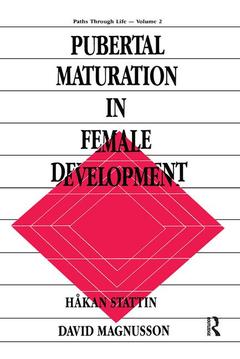Description
Pubertal Maturation in Female Development
Paths Through Life Series
Authors: Stattin H†kan, Magnusson David
Language: English
Subjects for Pubertal Maturation in Female Development:
Keywords
Menarcheal Age; David Magnusson; Configural Frequency Analysis; HN Stattin; Pubertal Timing; adult life; BMI Measure; biological maturation; Older Age Strata; interindividual differences; Pubertal Maturation; adolescent female development; Postmenarcheal Girls; Academic Preparatory; Pubertal Maturity; Early Developers; Opposite Sex Popularity; Oakland Growth Study; Premenarcheal Girls; Opposite Sex Relations; Norm Breaking; Advanced Social Behavior; Menarcheal Girls; Antisocial Behavior; Peak Height Velocity; Self-perceived Maturity; Tv Watching; School Adjustment; Mother Relations; Swedish Females; Younger Peers
· 15.2x22.9 cm · Paperback
Description
/li>Contents
/li>Readership
/li>Biography
/li>
Research on physical maturity has demonstrated conclusively that the assumption of an age-homogenous development does not always hold true. This volume presents a biosocial model focusing on the role of individual differences in biological maturation to be used as a framework for empirical studies exploring adolescent female development. The longitudinal design of the research program offers the possibilities to examine both short- and long-term consequences for individual variations in pubertal development. In the present volume, the data for these analyses consist of a broad range of biological, mental, psychological, behavioral, and social factors extending from the age of 10 to the age of 30. Some of the questions the present volume attempts to answer are:
* Are variations in the timing of pubertal development among girls related to their psychological and social life situation in the adolescent years? If so, when is the relation most prominent? In what areas is the relation most prominent? How does the relation come about?
* Do interindividual differences in physical maturation have any long-term consequences for adult life? If so, in what areas, for which girls, and through which developmental processes does pubertal development operate? The long-term consequences are a major concern addressed in considerable detail.
Contents: The Issue of Biological-Psychosocial Interaction. The General Approach and the Basic Model. Data. Psychological Adaptation and Self-Concept. Interpersonal Relations. Social and Emotional Adjustment. The Short-Term Consequences. Developing Girls in a Developing Environment. Mediators of the Influence of Pubertal Timing. The Long-Term Consequences. Some Final Reflections.




